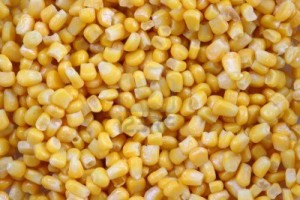Umm, About That Decongestant …
Thursday, September 21st, 2023By Bob Gaydos
A quick stream through news you may have missed, starting with, of all places, the FDA, a government agency notoriously reluctant to make waves, much less headlines, but which nonetheless issued a statement (1.) informing all Americans with stuffy noses that the pill or liquid they’re taking to relieve the congestion doesn’t work, in fact (2.) probably never has worked, even though it’s been used for 75 years, but don’t worry, it’s still safe to take if, say, you have a headache and can’t figure a cheaper way to deal with that or just hate to throw stuff out, even if it doesn’t work because, after all, (3.) the FDA hasn’t told the drug companies to take it off the shelves because it contains phenylephrine as its decongestant-fighting ingredient and an advisory group formed by the agency voted unanimously that (4.) tests show the stuff doesn’t decongest any noses when in pill or liquid form because it doesn’t reach the affected area, which is actually what another advisory group told the FDA about phenylephrine in 2007, but the FDA (see notoriously reluctant to make waves) decided to let it remain on the shelves because, well, it’s apparently safe, just not useful as a decongestant, and so now the agency will (5.) solicit public input on the question before deciding whether to pull the products off the shelves and replace them with something that works, but not likely (6.) pseudoephedrine, which was moved behind pharmacy counters in 2006, by law, because pseudoephedrine (as millions of viewers of “Breaking Bad” and “Better Call Saul,” learned) can be processed into methamphetamine and America was fighting a war on drugs and, yes, (7.) pseudoephedrine is still available without a prescription and meth is somehow still being made, but let’s not confuse the issue with facts because the FDA still has to go through the lengthy process of determining whether to remove these oral decongestants from the market and (8.) wants to know what you think (assuming you don’t want to simply toss the pills and liquids and switch to nasal sprays, which are effective) and so we’ll have to wait and in the meantime (9.) consider a recent deal the Biden administration made with the government of Iran to free five Americans who were being held as spies in exchange for the release by the U.S. of five Iranians (10.) and (follow the bouncing ball here) unfreezing of $6 billion in Iranian assets (oil money) being held in a bank in the Republic of Korea (the good guys) to be transferred to a bank in Qatar (not sure), where it can only be (12.) withdrawn to be used for things like food, medicine and other humanitarian needs Iran has apparently been struggling to provide, but not (13.) for weapons, all of which (14.) prompted Republicans in America to scream about the U. S. not paying ransom money, even though it was technically Iran’s money, but critics argued it could free up other Iranian money to pay for weaponry, etc., although Republicans, and for that matter no one else, has ever offered a better, non-hostile way to free Americans being held in hostile countries, which would seem to be a more serious problem than that which House Speaker Kevin McCarthy should face in (15.) fulfilling that body’s duty to provide a budget for the government on time so that it can function, since his party controls the House where the spending bills originate and also since McCarthy had already (16.) reached an agreement with President Biden about a budget bill to avoid a government shutdown, none of which matters to the rowdy kids of the Freedom Caucus in the Republican Party, who don’t seem to care about shutting down the government, affecting millions of Americans, and (17.) are more interested in trying to find any evidence that would justify an impeachment investigation into Biden, rather than presenting any evidence that would justify an investigation, which leaves McCarthy looking again, (18.) like the hapless fool he is, begging and pleading and cajoling a group of spoiled brats to act like grown-ups, not like rowdy teenagers making out in the theater, which is the signal to (19.) cue in Rep. Lauren Bobert, a prominent member of the Freedom Caucus, loudly talking and singing, arguing with other audience members, vaping, groping, being groped by (oops!) the owner of a gay club that offers drag entertainers and ultimately being escorted out of a live performance of “Beetlejuice” at the Denver Center for the Performing Arts, which (20.) had some more responsible members of the GOP (there are one or two) reaching for the Sudafed or DayQuil because at least the acetaminophen in them still works, (21.). Or so the FDA tells us.
rjgaydos@gmail.com


